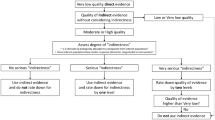Abstract.
Definition of the problem: Every decision for or against life-sustaining measures in ICUs is a result of different factors, the kind and course of the illness, probable prognosis, age of the patient, but also character, experience and knowledge of the acting staff members. These factors may combine in an accidental way. The aim of the investigation was to evaluate these factors as far as possible. Arguments and conclusion: 287 physicians from intensive care units (ICU) in 43 hospitals were interviewed. In a questionnaire, 6 case vignettes of severely ill patients served for hypothetical reasons and eventually decisions to act. Maximum medical activity was recommended in university hospitals, but acute lifesustaining measurements were equally accepted in all three kinds of hospitals. Other factors – such as duration of medical activity of the doctors, years of experience in intensive care medicine, motivations to act, sex and life attitude, but also the age of the patients – were of no significance. Because of the traditional close cooperation in ICUs, the nursing staff was also interviewed. For reanimation, intubation/artificial ventilation and pain relief therapy there where no differences in the group of doctors. These were significant in invasive diagnostic and therapeutic measurements, which were generally rejected earlier and more easily by the nursing staff.
Zusammenfassung.
287 Ärzte/Ärztinnen aus internistischen Intensivstationen von 43 Krankenhäusern verschiedener Versorgungsgrade wurden mit Hilfe eines Fragebogens an Hand von 6 Fallbeschreibungen befragt, welche Maßnahmen sie bei einer bestimmten Krankheitskonstellation noch durchführen würden. Gleichzeitig wurde der Einfluss bestimmter persönlicher Faktoren auf die Entscheidungen überprüft. Im Ergebnis führt die Tätigkeit in einer Universitätsklinik zu einer stärkeren Befürwortung des therapeutischen Maximums. Die übrigen Faktoren (Dauer der Berufstätigkeit, Intensiverfahrung, Entschlossenheit zu Handeln, Geschlecht und Lebenseinstellung der Ärzte, aber auch Patientenalter) hatten keinen signifikanten Einfluss. Wegen der traditionell engen Kooperation auf den Intensivstationen wurden 221 Pflegekräfte ebenfalls befragt. In der Frage Reanimation, Beatmung und Schmerztherapie herrschte große Übereinstimmung, Dissens bestand aber bei weiterführenden Maßnahmen wie invasiver Diagnostik und Therapie, die vom Pflegepersonal signifikant häufiger abgelehnt wurden.
Similar content being viewed by others
Author information
Authors and Affiliations
Rights and permissions
About this article
Cite this article
Dlubis-Dach, J., Glogner, P. Durch welche Faktoren werden Therapiebegrenzungen auf internistischen Intensivstationen beeinflusst?. Ethik Med 13, 76–86 (2001). https://doi.org/10.1007/s004810000098
Issue Date:
DOI: https://doi.org/10.1007/s004810000098




